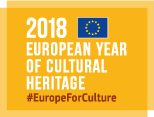Euro Magic - Linternauta
Challenge: WHY the innovation has been developed? What problem is addressed and why has not been not solved before?
Projections of images accompanied by text recitals and the performance of musical melodies obtained significant sociocultural relevance in Europe between the first half of the nineteenth century and the first third of the twentieth. To fulfil their aims, these projections used a new technological device that was given such labels as fantoscope or projection lantern and whose name was lent to a very popular medium for social communication known as the magic lantern. Despite the magic lantern’s undoubted influence in modern-era European, it has had only a residual presence as an object of scholarly study. How can the educational potential of magic lantern slides that are scattered in collections across Europe be organized, interpreted and exploited? To contribute to solving this problem, Linternauta seeks to achieve an objective: to develop a classification for magic lantern slides to implement a web application geared toward educational interpretation of them.
Solution: WHAT the solution is about? HOW it goes beyond the state of the art?
In the context of the research project ‘A Million Pictures. Magic Lantern Slide Heritage as Artefacts in the Common European History of Learning’, López and Frutos (University of Salamanca) proposed the use of descriptive content analysis as a method for the taxonomic organization of magical lantern slides in Europe. López and Frutos developed a controlled vocabulary that would facilitate the classification of magical lantern slides according to their discursive gender. A vocabulary that should serve as a relational architecture for the design and development of web application Linternauta. The web application aimed at the interpretation of cultural heritage associated with the collection of magic lantern slides by promoting technological and educational innovation. It aims to boost the knowledge, the accessibility and the cultural value present in the magic lantern slides thanks to the new digital technologies and directly stimulate the contemporary cultural experience with this audiovisual heritage.
End-users and examples of uses: WHO will beneficiate/ is beneficiating from the solution? WHERE and HOW the solution has been adopted? How will impact people or end-users? Add as more as possible examples of market and society uptakes
Linternauta to be incorporated into the catalogue of pedagogical tools used by the integrated centres such as the National Association for the Defense of the Heritage of the Historical Institutes, the educational services of museums -such as the Museu del Cinema. Col.lecció Tomàs Mallol or the National Museum of Science and Technology- or a temporary and itinerant exhibition as ‘A return around the world of the magic lantern’, produced by the Scientific Culture and Innovation Unit of the University of Salamanca. Linternauta offers online multi-language content and three levels of experience for the user: a) The user as an inexperienced viewer who knows nothing about the universe of the magic lantern. b) The user as a spectator that is familiar with the topic but needs to be guided by the conceptual map of discursive genres. c) The user as an expert viewer who, as lanternists used to do can create his own session of magic lantern. A user who can also consult or not the conceptual guide of discursive genres. Spread knowledge and access to magic lantern slides thanks to information and communication technology. Stimulate the direct experience of user's community regarding such a valuable Cultural Heritage.
Future possibilities: Future market perspectives when the innovation will be fully available or in use
Linternauta offer a perspective on the future for interpreting and socializing magic lantern slides in the current context of educational communities. This objective would build on the following hypotheses and assumptions: a) The content of magic lantern slides had a highly important historical role in the socialization of scientific culture in educational communities between 1845 and 1936. b) To socialize magic lantern slides in the current context of the educational communities, it is necessary to combine heritage focused education and citizen participation. To achieve the first objective, I would design an empirical and descriptive content analysis study that would address the construction and reception of the concept of ‘scientific culture’ in the educational system (1845-1936) via the visual content provided in classrooms through the use of magic lanterns. To pursue the second objective, I would implement a collaborative digital platform to facilitate and promote the joint work of researchers, teachers, students or any other member of the educational community currently involved in the socialization of cultural heritage linked to magic lantern iconography repertoires.
Media coverage
https://youtu.be/C1Lv9EJejs8
References for more information (eg. website, social media)
Contacts:
Maika López (maika@usal.es)
Application sectors:
- Enabling digital technologies for CH
Objectives:
- Knowledge sharing and education
RRI Dimensions:
- Science Education
Communities:
- Shared management of cultural heritage

